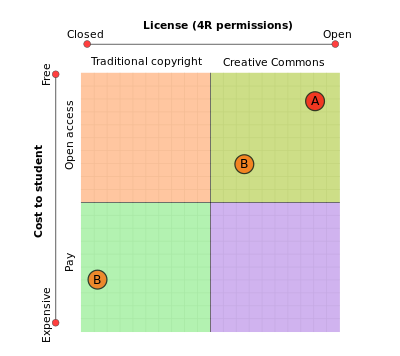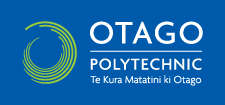Course assignment
|
Assignment questions
PART 1: Four multiple choice questions based on mini copyright situations
|
- Read through the general requirements of E-Activity 3.1.
- You must prepare four MCQs. Choose four of the following five areas for your questions: scope, ownership, rights, exceptions or transfer of rights (i.e. each question must cover a different area of copyright selected from the list of five.)
- Use subheadings to identify the area of copyright, for example "MCQ question on transfer of rights".
- In the stem of your MCQ, sketch a realistic copyright situation in education. If your question is country specific, you should include this in your stem.
- Develop four alternatives including the correct answer and 3 distractors.
- Identify the correct answer and provide feedback for the correct answer. You must state the reason why the answer is correct.
- Clearly identify the distractors and provide feedback for each distractor stating the reason why the option is incorrect.
PART 2: Four multiple choice questions based on mini copyright situations using the legal code for a Creative Commons license
- Choose one of the Creative Commons licenses.
- Visit the License Chooser to find the full legal code for the license you selected (see for example the legal code for the CC-BY version 3.0 (unported) license.) After selecting the license in the chooser, click on the license link which should display the license deed (i.e. human readable version). Click on the link near the top of the page which says "Legal Code (the full licence)."
- Read this full license carefully with the view to expanding your knowledge on Creative Commons for identifying ideas for possible MCQ questions.
- Read through the Frequently Asked Questions on the Creative Commons wiki for ideas for possible MCQ questions.
- Drawing on your study of Creative Commons licenses, prepare four MCQ questions.
- In the stem of your MCQ, sketch a realistic copyright situation in education relating to the use of Creative Commons licenses.
- Develop four alternatives including the correct answer and 3 distractors.
- Identify the correct answer and provide feedback for the correct answer. You must state the reason why the answer is correct.
- Clearly identify the distractors and provide feedback for each distractor stating the reason why the option is incorrect.
PART 3: Practical remix and re-license exercise
|
- Review your original post for E-Activity 4.1 taking into account any comments and feedback during the course.
- If you chose not to publish or complete this activity, you will need to complete E-Activity 4.1 for this question.
- Feel free to edit the original text you published in your blog to incorporate any improvements based on feedback comments and your understanding of copyright and remix as the course has progressed.
- Remember to include the reflection component as well as the license you have applied to your derivative work.
- All sources must be properly attributed.
- All you need to submit is the blog url for this post in your assignment. Check the link to ensure that it goes directly to the individual post and not the homepage of your blog or the dashboard you use for editing your post. Make sure that the general public can access your blog and that you have not set your blog to private. Your assessor will not have the time to search for the post in your blog so please check that you submit the correct url. If you supply the incorrect url, or the post can't be accessed publicly, this question will be marked as "not-submitted".
PART 4: Quadrants of openness exercise
|

Example template for openness quadrants. (Download source file in .svg format for use with graphics packages which support the svg format. See for example, Inkscape.)
- Read the blog posts: Tuition is a Movie Ticket, OER are Popcorn and Cable on Free vs Open.
- Search and identify four "new" institutional projects or organisations that offer open access to their resources which could be used for educational purposes. New means that you cannot reuse any of the projects identified in David's blog post. When constructing your own matrix, you must have at least one project in each of 3 quadrants. You can have more than one project in a quadrant.
- You will need to research the copyright license and terms of reference of the projects you identify.
- Your task is to place the identified projects in the graphic to indicate relative openness and relative cost within each quadrant. For example, where the costs to student are more (including all related costs), these will need to be placed lower on the cost axis (vertical axis). Projects which are more open within the same quadrant, will need to be placed to the right of the horizontal axis.
- In the openness quadrant example, Institution A uses the least restrictive Creative Commons license and learners can access all learning materials for free. However, Institution B provides the course materials using a more restrictive Creative Commons license but learners are required to purchase an all rights reserved textbook and therefore is noted in two quadrants.
- Prepare a graphic where you place the 4 projects you have identified showing their relative positions according to the cost and openness dimensions in each quadrant. To save time, you can download the source .svg file which can be used in graphics packages which support the open svg format, for example the Inkscape open source scalable vector graphics editor.
- For each project or website you have identified you must:
- Provide the web address for the homepage
- Provide the web address for the copyright and relevant terms of services page.
- Write a short justification (in less than 100 words) stating the reasons for your relative placement of the project in one of the four quadrants.
PART 5: Participation evidence and learning reflection
- Review the table of specified participation blog posts to confirm that you have registered a minimum of 3 blog posts. Click on the sort arrow in the "Name" column to see the posts you have registered. If you omitted to register any of the required blog posts, do this now.
- Provide the links to your two best forum posts on the Google+ community for the course or alternatively additional blog posts over and above the required E-Activities. Write a short paragraph justifying why you selected these posts.
- Provide a link to your best Learning reflection (i.e. your 1st or 2nd Learning reflection). Write a short paragraph justifying why you selected this reflection and list any changes you would make now that you have completed the Assignment for this course.
Assessment rubric
Detailed assessment rubric to be posted soon.

